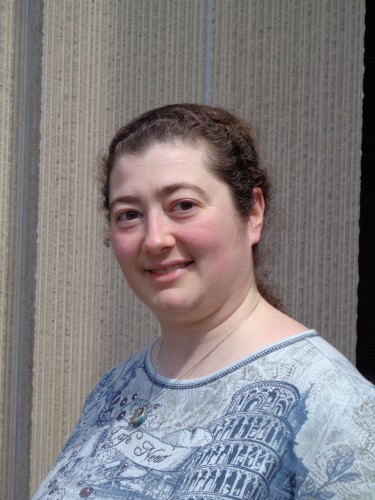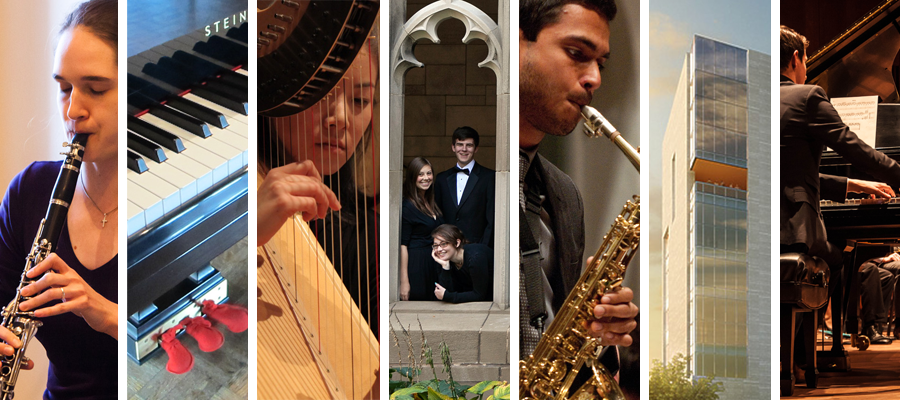 As a part of the Annual Cathy Heifetz Memorial Concert weekend, you will be recognized as this year’s Heifetz award winner. How do you feel about being nominated by your classmates and receiving this award?
As a part of the Annual Cathy Heifetz Memorial Concert weekend, you will be recognized as this year’s Heifetz award winner. How do you feel about being nominated by your classmates and receiving this award?
I am thrilled and honored! At the moment, I’m trying to avoid going too far into the realm of Sally Field at the Oscars, but… they like me! They really like me! It’s a wonderful graduation present, and I feel loved.
As a PhD candidate in ethnomusicology, your current scholarly interests include contemporary Jewish liturgical music, memorial music of the Holocaust, women’s agency in music and Jewish feminism. Can you expand on these interests and talk briefly about your dissertation?
Is it possible to talk “briefly” about one’s dissertation? I’ll give it a whirl. My dissertation, “Braided Voices: Women Cantors in Non-Orthodox Judaism,” is pretty much exactly what it says on the tin. For centuries, all Jewish cantors were male. Not necessarily by Jewish law, but more by tradition, which cannot only have the force of law, but can often be more powerful. Starting in the twentieth century, women started to assume this role. Today, in the Reform, Conservative, and Reconstructionist movements, more than half of all cantors are female, and many girls going to cantorial school now have grown up with female cantors. This shift caused deep changes in the sound of Jewish worship, in the music that’s used, in people’s conceptions of who could be a religious leader, what it meant to be a religious leader, and what a cantor might or could be. It’s an incredibly powerful shift to happen over the course of just a few decades, and it’s mostly not touched upon in the literatures of either Jewish music or Jewish feminism. In many ways, I wrote the dissertation because it was a subject that I wanted to know more about, and there were no books that could tell me the answers. In order to answer my questions, I had to write my own book!
Annual Cathy Heifetz Memorial Concerts
As to my broader interests, again, they’re questions that I want to know more about. My dad’s big hobby is the history of the Second World War, so I grew up exposed to all sorts of books and films, and we visited historic sites while traveling in Europe. I cannot remember a time when I didn’t know about the Holocaust. I suppose it was natural, when I started studying music, for me to gravitate towards that kind of topic. Music and mass murder seem like they’d be completely incompatible, and yet there are whole books specifically devoted to Holocaust music. Music is one of the ways that we remember and memorialize things, and this struck me as one of those stories that isn’t quite finished yet. The past is still echoing in the present, and I was fascinated by that, the ways that people are still shaping and grappling with this long-ago crime. I think my interest in women’s issues and feminism comes from a similar place. I grew up in an era in which a great change had just happened, and people were still figuring out how to deal with it. We’re still grappling with those questions. Sometimes I think we should be much further along than we are, and then my mom will tell me a story about the limitations placed on women in her youth, and I realize how far we’ve already come. Maybe the thing that all of these topics have in common is second acts. We’re in love with the big dramatic event, the grand gesture, and I always want to know what happens next. Where do you go from here? How do you pick up and reorganize after a revolution or a change? What’s the rest of the story?
You are also an avid Sacred Harp singer. For those of our readers who are unfamiliar with this organization, can you explain a bit about its roots? What does involvement in this group mean to you?
The Sacred Harp is one of many books that are part of a tradition of shape-note singing, which is the more proper name for the tradition. But the Sacred Harp is the most popular book, so people tend to use the two terms interchangeably. Shape-note singing is one of the great folk traditions of the United States that not enough people know about. It’s a style of three- and four-part hymn singing that began in New England in the late 18th century and quickly migrated to the Deep South, which is where it really took root. Musically, the tunes have roots stretching back to the Renaissance. The harmony is beautiful. It’s related to common-practice harmony, but it’s not the same thing at all. It’s really its own internal system. The first tunes in this style were composed by itinerant tune-smiths who were trying to improve upon the standards of congregational hymn singing. But, as is often the case when people try hard to achieve one goal, the reality turned into something very different. Shape-note singing as it eventually shook out in real life turned into an intense, full-bodied practice where singers can let all of their passions out into the open. We sing for each other — it’s not a performance tradition, it’s participatory, and there is no audience as such — and we make a sound that will rattle your bones. It’s one of the most democratic styles of music that I know about. Anyone can do it. If you think you don’t know how to sing, that’s okay. We’ll teach you. The shapes of the notes were designed for pedagogy. And if you’re worried about sounding terrible, we sing loud enough that it doesn’t matter. (My infinitely patient neighbors can attest to this.)
The Hyde Park shape-note singers were the first friends I made when I moved to Chicago back in 2000. In many ways, they’re family to me. We’ve been singing together once a week through illness, marriages, job and personal upheavals, births, deaths, graduations, the economy going down the drain and burbling back, and we’re still here, and we’re still singing. It’s music, and it’s far more than just music. Come sing with us on a Thursday evening. You’ll like it!
After completing your dissertation, what do you envision yourself doing next?
Well, I’ve already called my mom and run around like a nut, so there’s two things on the checklist crossed off! I have a summer job teaching a mini-course called “Jewish Music, Jewish Cultures” through the Spertus Institute, and I’m really excited about that. I’d like to get a job at a nice university that will support my research habit. One thing I would very much like is to continue to be able to teach undergraduates. I like undergraduates. They’re in the final stages of becoming grown-ups, and it’s exciting to watch them learning how to live on their own, how to interact as one adult to another, and how to think independently of their families and teachers. They don’t have much of a sense of what’s impossible, and I love being able to show them things and then seeing them run with those ideas. You get to see their adult personalities emerging, and it’s just an astonishing thing to witness.
Annual Cathy Heifetz Memorial Concerts
Interview by Julia Tobiska
